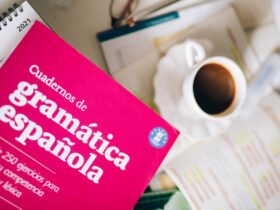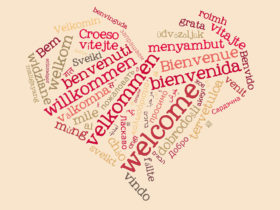Thailand is a linguistically diverse country with more than 62 officially recognized groups. The official or national language is Central Thai or Siamese. People in the region also speak Lao, which is Laos’ official language. The origins of both of these languages can be traced back to the Tai-Kadai family, which had its roots in China.
Central Thai is native to Central, Eastern, and Southwestern Thailand, which includes the Bangkok Metropolitan Region. Thai is a tonal and analytic language with around 20-36 million native speakers and 44 million second-language speakers.
Thai Writing System
The Thai language utilizes the abugida script which was popular in South Asian languages. Ramkhamhaeng the Great created this script, and it has been in use since 1283. Abugida descended from the Proto-Sinaitic alphabet, and you can see distinct influences of Phoenician, Aramaic, Brahmi, Tamil-Brahmi, Pallava, and old Khmer in the writing.
This writing system has 44 consonants that represent 21 sounds, divided into three classes: middle, high, and low. Thai has 21 vowels that can be used on their own but are often used in combination with consonants to create different sounds. Many of these vowels are borrowed from Sanskrit and show up in Sanskrit loanwords. The vowels are placed above, below, to the right or left of the consonant (similar to many Southeast Asian and Indian scripts.)
Thai is a tonal language where the tone can change a word’s meaning. Vowels usually symbolize these words. However, they can also be described through the class of the initial consonant, vowel length, closing consonant, and tone marks. These tone marks are ‘mai ek’, ‘mai tho’, ‘mai tri’, and ‘mai chattawa.’
Though Thailand uses Hindu-Arabic numerals like most of the world, the Thai script has numerical decimal digits. Thais also use their script to write Sanskrit and Pali, as both are featured prominently in their religious texts.
Thai Grammar
Thai is an analytic language with a Subject – Verb – Object order, similar to English. However, unlike English, the language isn’t focused on the subject, so it is possible to omit it and have it make complete sense when saying something. Thai pronouns are gender-based and also showcase the relative status of both the speaker as well as the audience. Many words can be used as adjectives and adverbs without adding suffixes such as ‘ly’ or ‘ing’ to the root word. In Thai sentence order, adverbs and adjectives are placed after the word they modify.
Verbs don’t change based on tense, gender, mood, quantity, or voice. There are tense-markers, present before or after the verb to help readers. Nouns are uninflected, have no gender, and require no articles. There are no singular or plural forms, and some nouns are reduplicated to become collective nouns. For example, ‘dek’ means child as well as children, while ‘dek dek’ means a group of children.
Pronouns aren’t used in casual conversations. But when used, they are in honorific registers, which means the pronouns change based on a person’s social status, their relationship with the speaker, as well as the social setting. Specific pronouns are used while referring to royalty, nobility, and the clergy.
Particles are placed at the end of the sentence to indicate different expressions like mood, request, question, etc. Thai speakers use these five particles, like how English speakers use intonation.
Thai Dialects
Several dialects have developed over the centuries, and they vary based on regional differences and other such influences. Here’s a look at the different forms of Thai spoken today:
- Eastern Central Plains – The dialects spoken in the Eastern Central Plains include Ayutthaya, Eastern, Thonburi, and Vientiane Central Thai.
- Western Central Plains – Suphanburi, Kanchanaburi, and Rayong dialects are spoken in Suphan Buri, Sing Buri, Kanchanaburi, and Rayong Province.
- Capital Core Thai – Krung Thep and Chonburi are spoken in the Core area while Nangrong, Hatyai, Bandon, and Betong are spoken in the Enclave Area.
- Upper Central Thai – People in the Upper Central Thai region speak New Sukhothai, Phitsanulok, and Pak Nam Pho.
- Southwestern Thai – People in Southwestern Thai speak Ratchaburi and Prippri dialects.
- Khorat Thai – The Khorat Thai people have a distinctive dialect of their own.
Thai also has several related languages that have descended from the same language family. Many of them are mutually intelligible, so if you understand Thai, you might be able to understand them as well. Based on the social context, Thai also has five distinct registers (forms of language):
- Street or Common Thai
- Elegant or Formal Thai
- Religious Thai
- Rhetorical Thai
- Royal Thai
Most people can speak and understand all of these forms, but Street Thai is commonly used in casual conversations and day-to-day communication.
The Thai language has a fascinating history and can be a worthwhile addition to your language skills. Exposure to native speakers will help you grasp the tones, registers, and inflections better.


























Leave a Reply